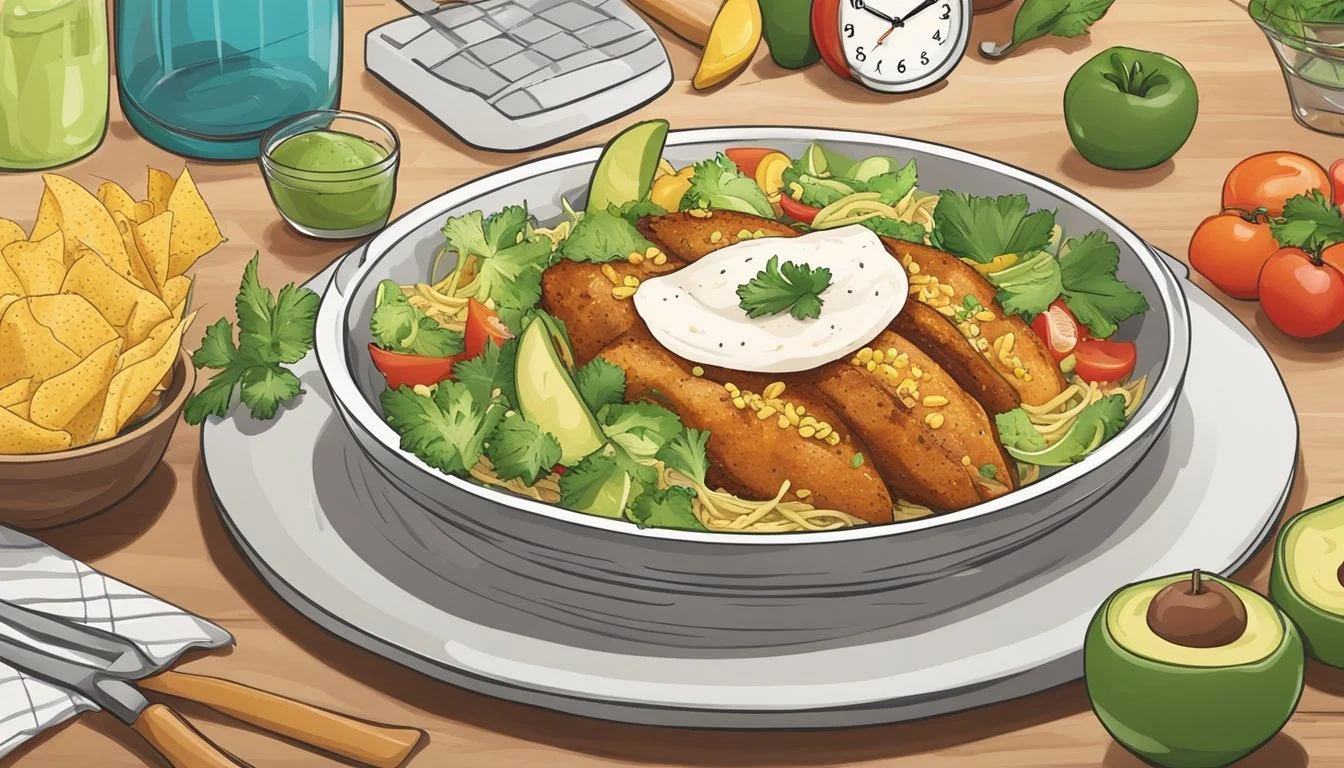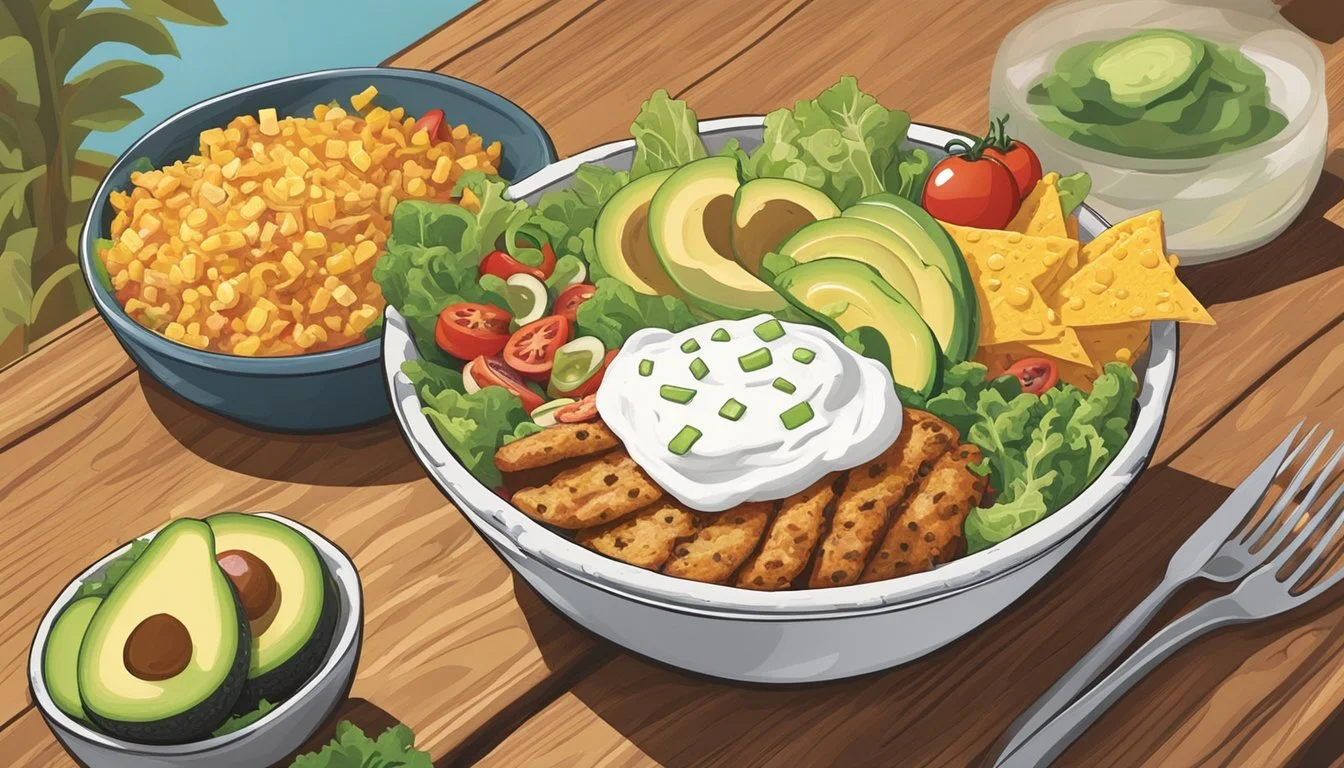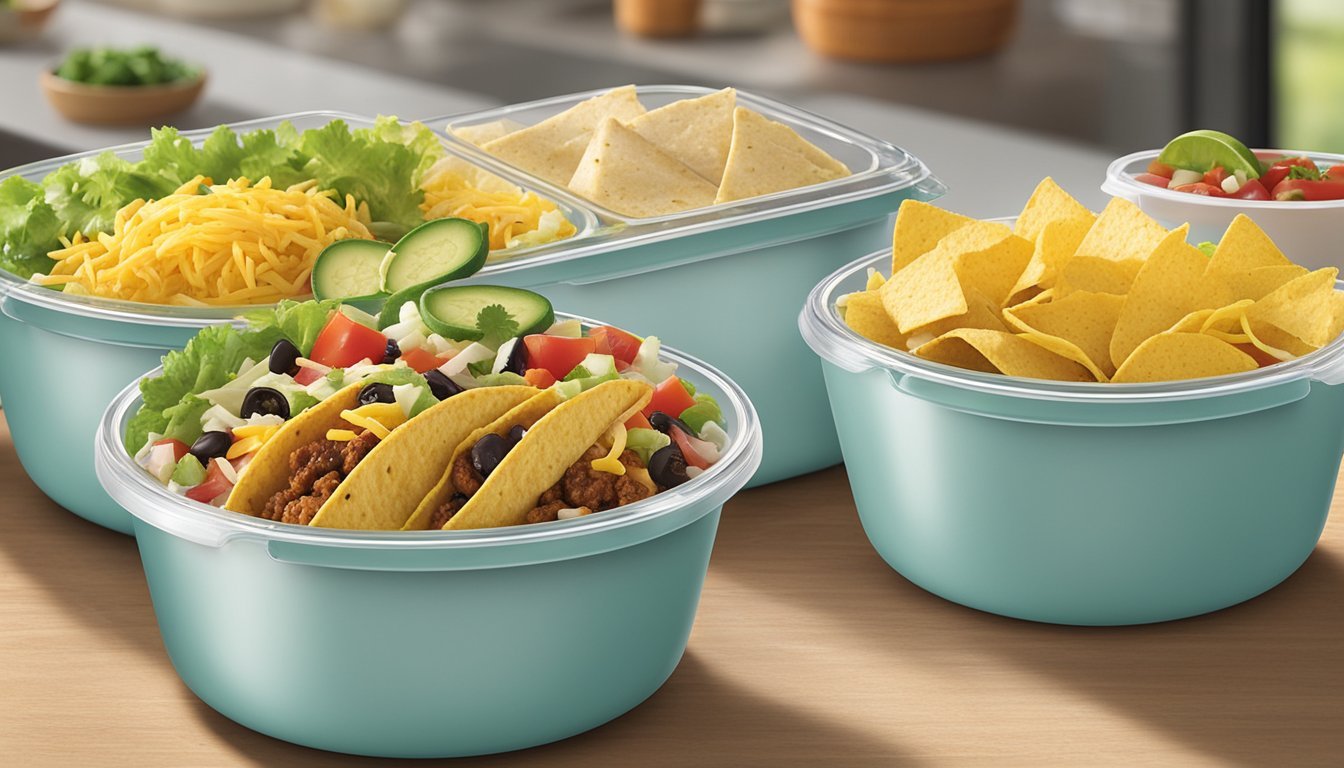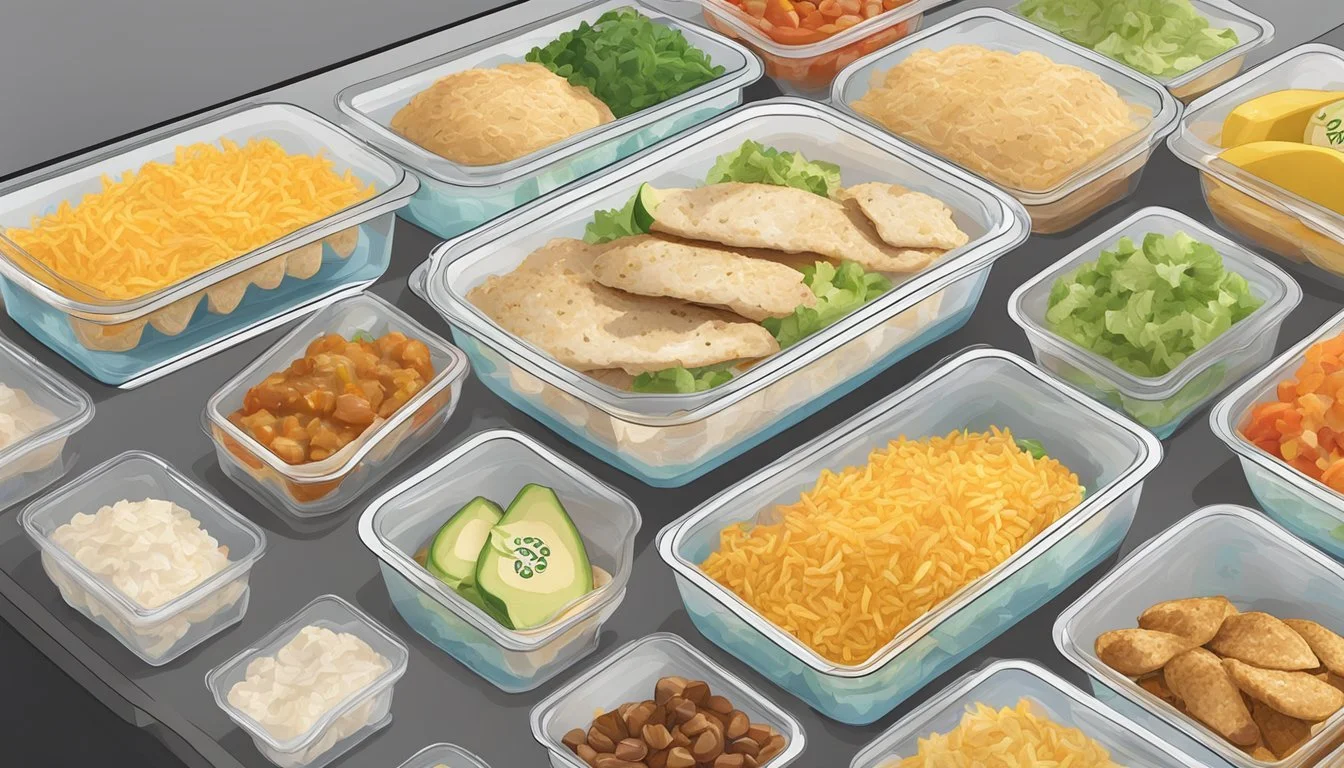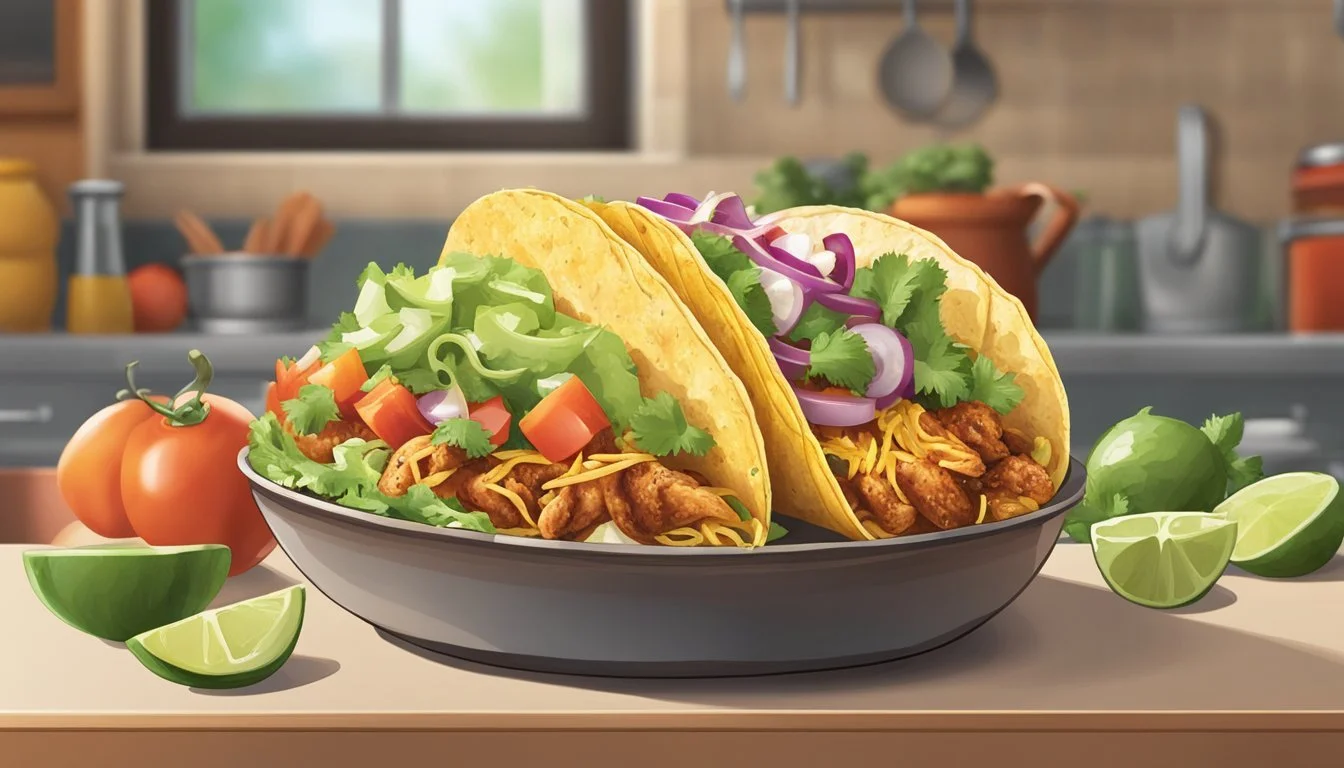How Long Do Chicken Taco Bowls Last?
Storage Tips and Shelf Life
When it comes to meal prep, chicken taco bowls are a delicious and healthy option that can make your weeknight dinners a breeze. Made with a blend of seasoned chicken, rice, and an array of fresh ingredients like pico de gallo and cilantro sauce, these bowls are packed with flavor and nutritional value. Meal preppers often wonder about the shelf life of these tasty dishes, as knowing this can help them plan their meals more efficiently.
Chicken taco bowls typically last about 3 to 4 days when stored properly in the refrigerator. It's essential to cool the chicken and other ingredients before refrigerating them to prevent any potential bacterial growth. For longer storage, consider freezing the chicken taco bowls in airtight containers, where they can stay fresh for up to 2 to 3 months.
Preparing chicken taco bowls in advance not only saves time but also ensures you have a go-to healthy meal ready at your convenience. By understanding the best practices for storing these meal prep delights, you can enjoy their full flavor and nutrition safely throughout the week.
Understanding Chicken Taco Bowls
Chicken taco bowls are a versatile and popular meal option that provides a balance of nutrients and flavors. In this section, we will explore the essential components of a chicken taco bowl and its nutritional profile.
Components of a Chicken Taco Bowl
Chicken taco bowls typically consist of several core components that come together to create a delicious and satisfying meal. Chicken is generally the primary protein, often seasoned with a mix of taco seasoning and other spices. Commonly, the chicken is marinated and cooked to ensure it is flavorful and tender.
The base of the bowl usually includes rice or lettuce, depending on whether you prefer a more carb-focused or lighter green base. Additional ingredients often include black beans, corn, avocado, and various salsas. These ingredients not only add flavor but also provide a range of nutrients.
Taco toppings such as cheese, sour cream, and a sprinkle of cilantro give the bowls their final touch. Often, home cooks might also add ingredients like diced tomatoes or onions for added texture and taste. Combining these elements creates a meal that's both hearty and nutrition-packed.
Nutritional Profile
The nutritional content of chicken taco bowls makes them a balanced choice for meal prep. A standard chicken taco bowl includes around 400-500 calories per serving. Protein from chicken helps in muscle maintenance and repair, offering approximately 20-30 grams per bowl.
Carbohydrates primarily come from rice, beans, and corn, contributing around 50-60 grams. These ingredients also provide dietary fiber, which aids digestion. Regarding fats, avocado and cheese offer healthy fats, with each bowl containing around 15-20 grams of fat.
Vitamins and minerals are also well-represented. Ingredients like avocado, lettuce, and salsa are excellent sources of vitamin A and C. Calcium is provided by cheese, while black beans and corn add essential minerals such as iron and potassium. Additionally, the bowls are somewhat low in cholesterol but can contain varying levels of sodium and sugar depending on the specific components and their preparation methods.
Proper Storage Techniques
When storing chicken taco bowls, attention to refrigeration and freezing methods can significantly affect the quality and safety of your food. Both methods help extend the shelf life of your taco bowls, ensuring they remain fresh and delicious.
Refrigeration and Shelf Life
Chicken taco bowls should be stored in airtight meal prep containers to minimize exposure to air and prevent contamination. They typically last 3-4 days in the refrigerator.
It is crucial to store the taco bowls at a constant temperature of 40°F (4°C) or below. Labeling the containers with the date can help keep track of their freshness. Additionally, separating components like pico de gallo or cilantro sauce can maintain their quality, as some ingredients may spoil faster.
Freezing for Longevity
For longer storage, chicken taco bowls can be frozen, extending their lifespan up to three months. Before freezing, ensure the chicken taco bowls have cooled completely to avoid condensation buildup, which can cause freezer burn.
Using airtight freezer bags or containers is recommended. Label them with the date and contents for easy identification. When reheating, it is advised to thaw the taco bowls in the refrigerator overnight before reheating in the microwave or on the stove to preserve taste and texture. This method keeps leftovers safe and convenient for future meals.
Preparing Chicken Taco Bowls
To make perfect chicken taco bowls, start with choosing high-quality ingredients, use effective cooking techniques, and enhance flavors with proper seasoning.
Choosing Quality Ingredients
Selecting the right ingredients is crucial. Chicken breasts are often preferred for their lean protein content and tender texture. Opt for fresh vegetables like lettuce, tomatoes, and avocados. These add crunch and freshness to the dish.
Consider using organic vegetables when possible. For the best flavor, use extra virgin olive oil and fresh spices. Pre-made taco seasoning is convenient, but making a homemade blend allows for customization.
Cooking Techniques
Different cooking methods can be used based on convenience and flavor preferences. Sauteing is quick and locks in flavors. Heat olive oil in a skillet, add the chicken, and cook until it's thoroughly done.
Slow cookers and instant pots are great for hands-off cooking. For slow cookers, cook the chicken on low for about 4-6 hours. In an instant pot, pressure cook on high for 5 minutes with natural release. Baking is another option and is less hands-on.
Seasoning for Flavor Enhancement
Seasoning is what makes chicken taco bowls flavorful and interesting. A blend of cumin, chili powder, garlic powder, onion powder, paprika, oregano, cayenne, salt, and pepper works well.
Adjust the salt and pepper to taste. For a bold flavor, marinate the chicken in olive oil, lemon juice, garlic, and spices for at least 30 minutes. This step can be done ahead of time and stored in the fridge.
Serving Suggestions
For the best dining experience, creating balance is essential. Consider both the structure of the taco bowl and the array of sides to enhance the meal's flavors and textures.
Assembling the Perfect Bowl
Start with a base layer of rice or mixed greens to create a foundation. Follow with a protein addition like chicken, beef, or ground turkey, ensuring it is evenly distributed. Optimal toppings selection should include a mix of textures and flavors, such as pico de gallo, black beans, corn, and shredded cheese.
For an extra kick, add salsa and sauces like creamy cilantro sauce, which pairs well with chicken taco bowls. Garnishing with fresh cilantro and a squeeze of lime juice can heighten the dish's brightness.
Complementary Sides
Tortilla chips can be a crunchy accompaniment, perfect for scooping up any extra toppings or salsa. Additionally, a light salad with a zesty lime dressing can match and balance the rich flavors of the taco bowls.
Consider serving with grilled vegetables as a warm, savory option. Tangy coleslaw can add a refreshing contrast alongside the main dish. Each side should complement the taco bowl without overpowering it, allowing the main flavors to remain the focus.
Meal Prepping and Portion Control
Meal prepping chicken taco bowls ensures that they remain fresh and healthy while aiding in managing portion sizes effectively. By planning ahead and using appropriate containers, one can maintain nutritional balance and control calorie intake.
Portion Sizes for Balanced Meals
An optimal portion size for a chicken taco bowl should include a balance of protein, carbohydrates, and fats. According to dietary guidelines, a well-balanced meal might include:
Protein: 4-6 ounces of chicken
Carbohydrates: 1/2 cup of cooked rice or quinoa
Vegetables: 1 cup of mixed vegetables
Healthy Fats: 1/4 avocado or 1 tablespoon of nuts
Meal prep containers with multiple compartments can be used to keep these portions separate and maintain the integrity of each component.
Efficient Meal Prepping Strategies
Efficiency in meal prepping saves time and ensures consistent calorie and macro balance. Start by cooking large batches of protein, such as slow-cooked chicken breasts, which can be seasoned and shredded. Preparing rice, quinoa, or another grain in bulk can also be time-effective.
Use meal prep containers to store individual portions. Label containers with dates to track freshness. Cook vegetables in advance but store them separately to maintain texture. By planning ahead and prepping components simultaneously, you can streamline your weekly meal preparation process.
Alternatives and Variations
There are numerous ways to tailor chicken taco bowls to suit different dietary needs and personal tastes. From making dietary adjustments to adding creative twists, these options ensure everyone can enjoy this versatile meal.
Dietary Adjustments
Vegetarian Options
For a meat-free alternative, substitute chicken with black beans, pinto beans, or chickpeas. These protein-rich ingredients provide a hearty base and blend well with traditional taco seasoning.
Low-Carb Alternatives
Replace the usual rice with cauliflower rice. This swap significantly reduces the carb content while maintaining the texture and appearance of a traditional taco bowl. Another option is to use shredded lettuce as a base, turning the dish into a refreshing taco salad.
Gluten-Free
To ensure dishes are gluten-free, choose corn tortillas over flour ones and verify that all seasonings and ingredients are certified gluten-free. Gluten-free rice and other grains can also be incorporated without affecting the dish's flavor profile.
Creative Twists on the Classic
Taco Bowl Shells
For a fun and edible bowl, use pre-made or homemade taco bowl shells. These shells can be baked or fried and add an extra crunch to the meal. They can be shaped using oven-safe bowls and then baked until crispy.
Veggie Boosts
Increase nutritional value by adding a variety of sautéed or roasted vegetables. Peppers, onions, mushrooms, and zucchini are excellent choices that can be cooked with taco seasoning to enhance their flavor.
Different Cooking Methods
Experiment with various cooking methods for the chicken. Use a slow cooker for a set-and-forget approach, which results in tender, well-seasoned chicken. Alternatively, an Instant Pot can speed up the cooking process without sacrificing flavor, making it convenient for weeknight meals.
Signs of Spoilage
Chicken taco bowls, like any leftovers, require careful attention to ensure food safety. Recognizing spoilage signs helps prevent the consumption of unsafe food.
Color Changes: Fresh chicken taco meat typically has a bright color. Browning or grayish discoloration is a clear indicator of spoilage.
Odor: A distinct foul odor signifies that the chicken has gone bad. Spoiled meat emits a sour, unpleasant scent due to bacterial toxins.
Mold: Visible mold growth, in any color, is a sign to dispose of the chicken taco bowl immediately. Mold can appear as spots or patches.
Texture: Another indicator is a slimy or sticky texture. Fresh chicken should feel firm, while spoiled meat becomes slimy.
Expiration: Keep track of how long the taco bowl has been in the fridge. Chicken taco bowls are best consumed within 3-4 days. Label and date leftovers to monitor their age accurately.
Taste: While it's not recommended to taste-test for spoilage, an off taste after reheating can confirm that the food is no longer good.
Storage Tips: Proper storage can prolong the shelf life. Keep the chicken taco bowl in an airtight container and refrigerate as soon as possible after preparation.
List of Spoilage Signs:
Color changes
Foul odor
Mold growth
Slimy texture
Off taste
Regularly checking these spoilage signs ensures that any chicken taco bowl consumed is safe and fresh.
Health Considerations
Chicken taco bowls offer a nutritious and flavorful meal option, but it's important to manage allergens and balance macros to meet dietary goals. Focusing on these aspects helps ensure the dish supports a healthy lifestyle.
Managing Allergens and Sensitivities
Chicken taco bowls may contain common allergens like gluten, dairy, and soy. It's important to read ingredient labels carefully, especially for store-bought salsa, tortillas, and spice mixes.
Those with specific food sensitivities should opt for gluten-free tortillas and dairy-free cheese alternatives. Always use fresh, minimally processed ingredients to reduce the risk of allergic reactions. If using pre-marinated chicken, confirm it doesn't contain any hidden allergens like soy or wheat.
Balancing Macros for Dietary Goals
Balancing macros in chicken taco bowls involves controlling portions of protein, carbs, and fats. Lean chicken breast is a high-protein, low-fat option; aim for about 4-6 ounces per serving.
Add complex carbs like brown rice or quinoa to boost fiber intake and enhance satiety. Incorporate healthy fats, such as avocado or olive oil, but monitor portions to manage calorie intake. Pay attention to sodium levels in seasonings and sauces to avoid excessive intake.
Tailor the dish to personal dietary needs by adjusting ingredients and serving sizes. For those focused on low-carb diets, swap out traditional rice for cauliflower rice and avoid high-sugar toppings. Conversely, add extra rice or beans if seeking to increase carb intake for energy. Balancing macros effectively supports varied nutritional goals and a healthier lifestyle.

